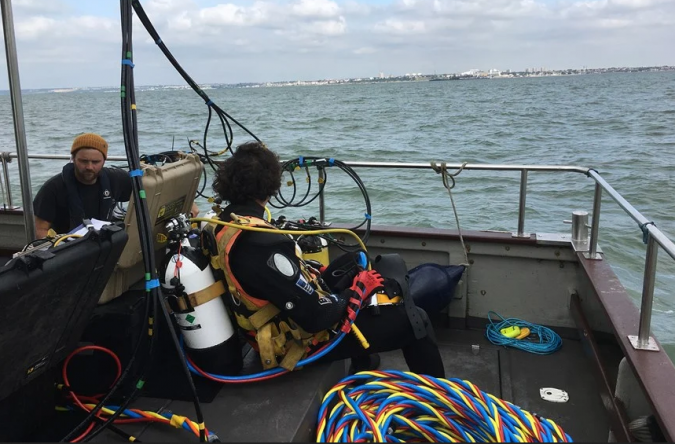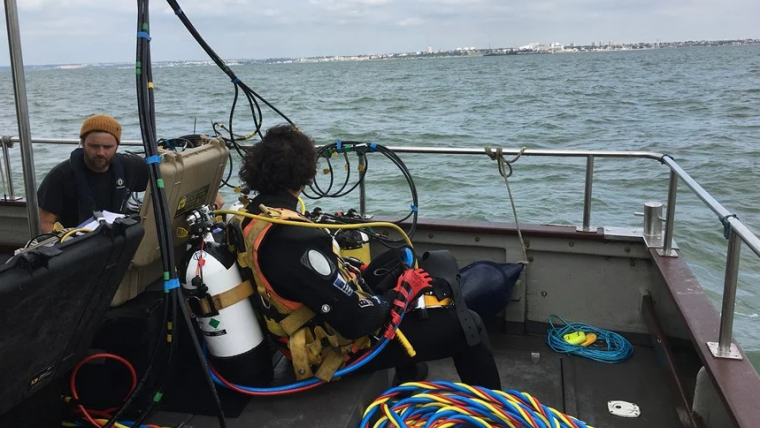Divers Map Condition of One of England’s Most Important 17th-century Shipwrecks
A team of divers investigated the remains of one of England’s most important 17th-century shipwrecks, the London, which accidentally blew up in 1665 in the Thames Estuary near Southend Pier in Essex. The diving project (16–20 August 2021) was funded by Historic England, working with MSDS Marine and Licensee Steve Ellis from the London Shipwreck Trust. It aimed to accurately map the layout of the wreck, which has been lying in two parts on the seabed.
The London was one of only three completed wooden Second Rate ‘Large Ships’ that were built between 1600 and 1642 and is the only one whose wreck still survives. Built in Chatham in Kent, it played a significant role in British history, serving in both the Cromwellian and Restoration navies. It formed part of the fleet that brought Charles II back from the Netherlands in 1660 to restore him to the throne, to end the anarchy that followed the death of Oliver Cromwell in 1658 and his son Richard Cromwell taking power. It blew up when gunpowder on board caught fire as the ship was on its way to collect supplies after being mobilized to take part in the Second Anglo-Dutch War of 1665–1667.















